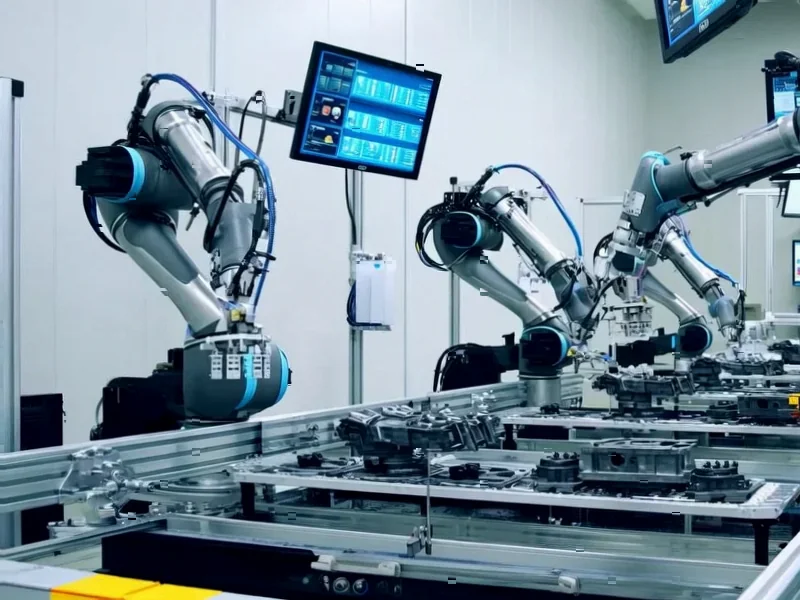According to CNBC, Lambda and Microsoft have entered into a multibillion-dollar agreement focused on AI infrastructure featuring Nvidia chips, with Lambda CEO Stephen Balaban describing the current environment as “the largest technology buildout that we’ve ever seen.” Balaban revealed on CNBC’s “Money Movers” that surging consumer demand for AI services like ChatGPT and Claude is driving unprecedented infrastructure expansion, noting the partnership continues a relationship dating back to 2018. While specific financial terms weren’t disclosed, the scale represents one of the largest AI infrastructure commitments announced this year. This massive investment comes as enterprises scramble to secure scarce GPU capacity amid the generative AI boom.
The Strategic Pivot in Cloud Computing
This deal represents a fundamental shift in how hyperscalers are approaching the AI infrastructure challenge. Rather than relying solely on their own data center builds, Microsoft is strategically partnering with specialized GPU infrastructure providers to rapidly scale capacity. This approach acknowledges that even the largest cloud providers can’t build fast enough to meet explosive AI demand. The partnership model allows Microsoft to maintain competitive positioning while avoiding the capital expenditure and construction timelines associated with traditional data center expansion. We’re seeing the emergence of a hybrid infrastructure model where cloud giants leverage both owned capacity and strategic partnerships to dominate the AI compute landscape.
The GPU Scarcity Crisis Intensifies
The Lambda-Microsoft agreement underscores the severe GPU scarcity that’s defining the current AI market cycle. Nvidia’s latest generation chips remain effectively sold out through 2025, creating a secondary market where infrastructure providers with secured supply gain enormous strategic value. This scarcity is driving consolidation and partnership models we haven’t seen since the early days of cloud computing. Companies like Lambda that positioned themselves early in the GPU supply chain now hold extraordinary leverage, essentially becoming the “oil producers” of the AI revolution. The multibillion-dollar scale suggests Microsoft is making a defensive move to lock up capacity that would otherwise flow to competitors like Google Cloud and AWS.
The Coming Infrastructure Consolidation
This deal likely signals the beginning of a major consolidation wave in AI infrastructure. Smaller players with valuable GPU allocations will become acquisition targets for cloud providers seeking to rapidly scale their AI offerings. The 2018 relationship start date indicates this isn’t a reactive move but part of a long-term strategy Microsoft has been building for years. We should expect to see similar announcements from other cloud providers in the coming quarters as they scramble to secure their own capacity partnerships. The AI infrastructure market is rapidly bifurcating between companies that control GPU supply and those dependent on accessing it through partnerships or spot markets.
What This Means for Enterprise AI Adoption
For enterprises planning AI implementations, this infrastructure arms race has significant implications. First, GPU availability will remain constrained through at least 2026, meaning enterprises must plan their AI roadmaps around compute availability rather than theoretical capabilities. Second, pricing for AI workloads will likely increase as infrastructure providers pass along their rising costs. Third, we’re entering an era where strategic partnerships between cloud providers and infrastructure specialists will determine which AI services actually get built and deployed. Enterprises that want reliable access to cutting-edge AI capabilities may need to commit to longer-term contracts or explore hybrid approaches that combine cloud and dedicated infrastructure.
The 24-Month Outlook
Looking ahead, the Lambda-Microsoft deal represents just the opening move in what will become a trillion-dollar AI infrastructure market. Within 24 months, we expect to see three major developments: first, specialized AI infrastructure providers will command premium valuations as scarcity persists; second, cloud providers will increasingly acquire rather than partner with infrastructure specialists; and third, we’ll see the emergence of regional AI infrastructure hubs as geopolitical considerations fragment the global compute market. The companies that control the infrastructure layer today will likely shape the entire AI ecosystem for the next decade, making deals like this far more strategic than their immediate financial terms suggest.




